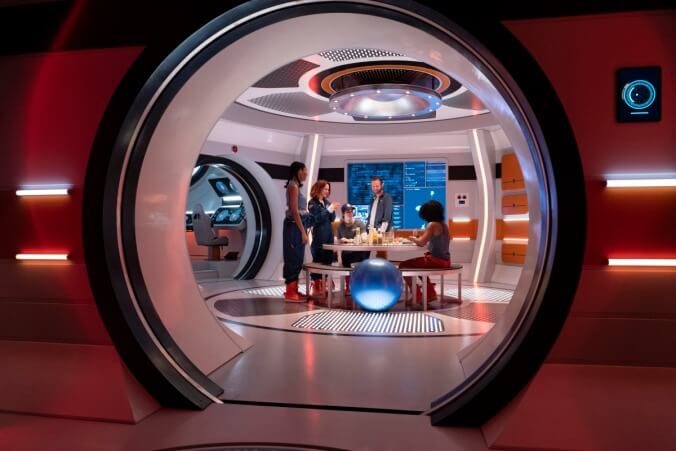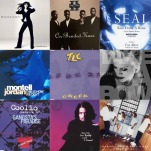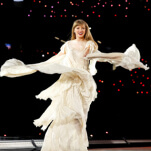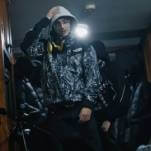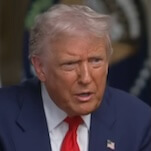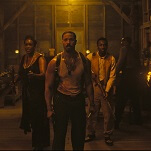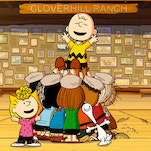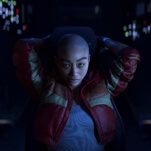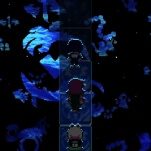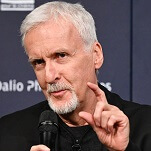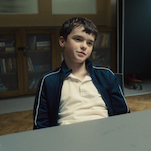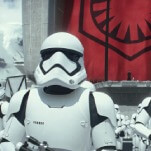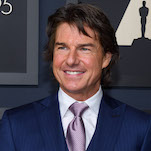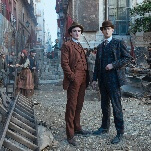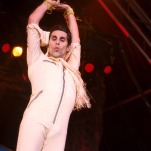The opening introduces the five-person crew of the Bradbury Heavy mission to Mars: Rei Tanaka (Jessica Williams), Jerry Pierson (Jefferson White), Casey Donlin (Jonathan Whitesell), Katherine Langford (Lucinda Dryzek), and the commander Alexa Brandt (DeWanda Wise). With 10 minutes left until liftoff, all seems well. But while the upbeat astronauts are bopping around the command deck to the sound of The Interrupters’ ska-punk classic “Family,” they receive a dire incoming message: Global nuclear war has just begun!
After a hasty vote, the crew decides—not unanimously—to launch anyway. Soon they’re in outer space, receiving zero updates from Earth, with over 200 days to go until they land on Mars. What follows, for a while, is a familiar tale of interstellar ennui, with crew-members getting bored and irritable as the days stretch on. It’s like an Alien movie, without the chest-bursting gore.
This is where the episode’s “hangout” factor kicks in, with a likable cast making even the bickering tolerable. As an often dissonant, pulsing score ratchets up the tension, credited writers Heather Anne Campbell and Glen Morgan and director Jakob Verbruggen follow a crew that questions the choices they’ve made, and worries—relatably—about the world they’ve left behind.
Meanwhile, they’re reminded every so often of how little room they have for error. They can’t pass the time by having sex, because they can’t afford an accidental pregnancy. They have to hope their onboard computer TINA stays operational without the Earth-initiated software updates it’s supposed to be getting periodically. When a solar flare heads their way, they have to scramble to avoid having their systems shut down completely.
It’s also when the flare hits that the episode takes a turn. Jerry tells his colleagues not to worry, because he’s crunched the numbers, and he’s absolutely certain that they’re not actually in any danger. He thinks that they’ve been unwittingly shunted into a “six degrees of freedom”-style simulator, capable of convincing them that they’re moving through space. He believes there was no nuclear attack; and he knows all this because whomever is controlling this experiment has failed to adjust for some minor details, involving microscopic build-up in the plumbing.
There’s evidence throughout “Six Degrees Of Freedom” to support Jerry’s Elon Musk-like simulation theory. The space shuttle has a porthole that’s supposed to remain closed from launch to landing, to function as a radiation shield… or, in a more conspiratorial interpretation, to keep the astronauts from seeing what’s actually outside. Also, every now and then, the crew either discusses or encounters examples of popular culture about aliens and hoaxes. Early on, Jerry describes Orson Welles’ controversial War Of The Worlds radio broadcast. Later, he and Casey hear what they think is a transmission from Earth survivors, which turns out to be a snippet from an old science-fiction TV show that has been pinging through the stars since it originally aired. (“The only evidence that there was advanced life on Earth is fake,” Jerry chuckles, sardonically.)
To prove he’s right about the simulation, Jerry opens up an airlock during the solar flare crisis, and… Well, we don’t find out what happens to him until the end of the episode. Bradbury Heavy does complete its mission. The crew opens the radiation shield, and sees through the porthole the landscape of Mars. But!… right before the closing credits, we see Jerry, shivering and naked in some kind of blank void, overhearing aliens talking about the Bradbury Heavy’s impressive achievement. It turns out he was right—sort of. They were being monitored…but not by Earth scientists. It was another species altogether, watching to see what would happen, and judging our planet accordingly.
As I mentioned up top, the staging of the stinger is too soft and vague to provide that good ol’ Twilight Zone tingle. But it’s interesting thematically, as a payoff to a little speech Jerry gives at the start of the episode about “the Great Filter”—the theory that the true test of advanced lifeforms is whether they can make it to another planet before wiping themselves out. Good news, humanity… We just crept across the finish line.
Or we did in “Six Degree Of Freedom,” anyway. But maybe that counts? Perhaps there’s something deeper going on with this episode’s many montages of old space travel footage—both real and fictional—and all of its chatter about what’s real and what’s not. What if the measure of our potential isn’t whether we actually make it to another planet, but whether we want to? Maybe writing books about this, and making movies, and airing TV shows… maybe that all means we are worth saving. Maybe The Twilight Zone just saved the world.
Stray observations
- This episode’s plot is almost exactly the mirror image of Meg Howrey’s recent science-fiction novel The Wanderers. In Howrey’s book, a group of astronauts agrees to take part in a fully simulated mission to Mars; and then as the months grind by, their experiences become so vividly real that they begin to suspect they’ve been duped, and are actually traveling through space! (Cue Jordan Peele.)
- In “Six Degrees Of Freedom,” one of the astronauts is idly playing with a toy Northern Goldstar plane, in a callback to “Nightmare At 30,000 Feet”… which itself featured a call-forward to this episode, when Adam Scott’s nervous flyer walks past a big advertisement for Mars missions. Also, the astronauts here have patches for the Whipple corporation, which manufactured the MP3 player in “Nightmare,” and is the name of a character from the technology-focused ‘60s episode “The Brain Center At Whipple’s.” Which makes one wonder: What if it turns out that The Twilight Zone is actually a series of loosely connected stories, set in the same universe? (Cue Jordan Peele, again.)
